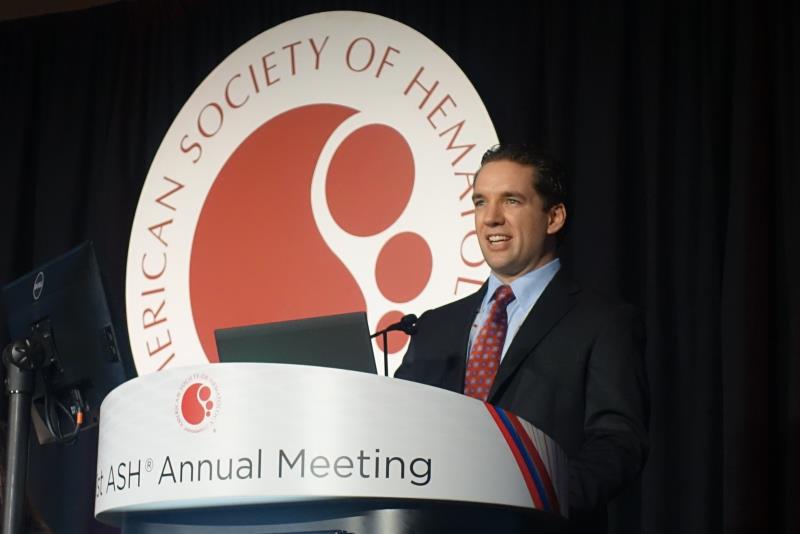 Dr Jordan Schaefer
Dr Jordan SchaeferThe addition of aspirin to direct oral anticoagulant (DOAC) therapy without apparent indication resulted in more bleeding events, according to data presented at ASH 2019.
“There has been a growing body of evidence raising the question of whether adding aspirin does more harm than good for certain patients,” said study author Dr Jordan Schaefer from the University of Michigan in Ann Arbor, Michigan, US. This question centred on the risk of increased bleeding with aspirin use without protection from adverse thrombotic events, he specified, particularly among individuals on full-dose anticoagulation.
“Therefore, [we sought to determine] the impact of adding aspirin to DOAC therapy without a clear indication for aspirin … [Our findings showed that this] combination led to more bleeding, especially clinically relevant nonmajor bleeding (CRNMB),” said Dr Schaefer.
The rate of CRNMB was significantly higher among participants receiving DOAC and aspirin vs those on DOAC only (18.70 vs 13.50 events/100 patient years [PY]; p=0.02); a similar effect was observed with NMB (32.82 vs 25.88 events/100 PY; p=0.04). However, the overall bleeding rate, albeit numerically higher, did not achieve statistical significance (39.50 vs 32.32 events/100 PY; p=0.07). [ASH 2019, abstract 787]
Moreover, the DOAC-aspirin combination led to higher hospitalization rates (11.76 vs 9.04 events/100 PY) and emergency room visits (17.96 vs 14.61 events/100 PY) than DOAC only. The most common sites of bleeding were cutaneous (eg, bruising), gastrointestinal, and genitourinary areas.
Schaefer and his team arrived at these findings using the Michigan Anticoagulation Quality Improvement initiative, which prospectively enrolled 2,045 individuals newly initiating on DOAC. Of these, nearly a third were on aspirin, 90 percent of whom were receiving a dose of ≤100 mg. A total of 639 aspirin recipients were propensity matched against 639 individuals on DOAC only (mean age 71.7 years, 55.9 percent male) and were followed up for approximately 15 months.
A majority of participants (87.7 percent) were on high-dose DOAC mostly for atrial fibrillation (74.4 percent). The most common DOACs used were apixaban and rivaroxaban (67.3 percent and 31.4 percent, respectively). The rates of new thrombosis were similar between the two groups (2.35 vs 2.23 events/100 PY for DOAC-aspirin vs DOAC, respectively).
Despite the large study registry that encompassed comprehensive thrombotic and bleeding outcomes, the strong propensity matching, and diverse patient groups included in the study, Schaefer called for larger confirmatory studies that should also explore outcomes in key patient subgroups. “Until such data are available, clinicians and patients should balance the risk/benefit of aspirin plus DOAC.”